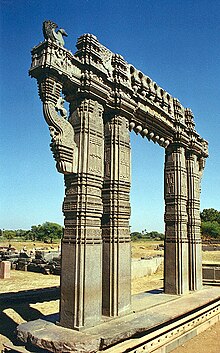Warangal District (Telugu: వరంగల్ జిల్లా, Urdu: وارنگل ضلع) is located in the northern area in the state of Andhra Pradesh, India. The administrative seat is Warangal.
Warangal District has an area of 12,846 km², and a population of 3,246,004 of which 19.20% was urban as of 2001. The district is bounded by Karimnagar District to the north,Khammam District to the east and southeast, Nalgonda District to the southwest, andMedak District to the west. Warangal is well known for its granite quarries (notably the black and brown varieties) and as a market for rice, chilies, cotton, and tobacco.
